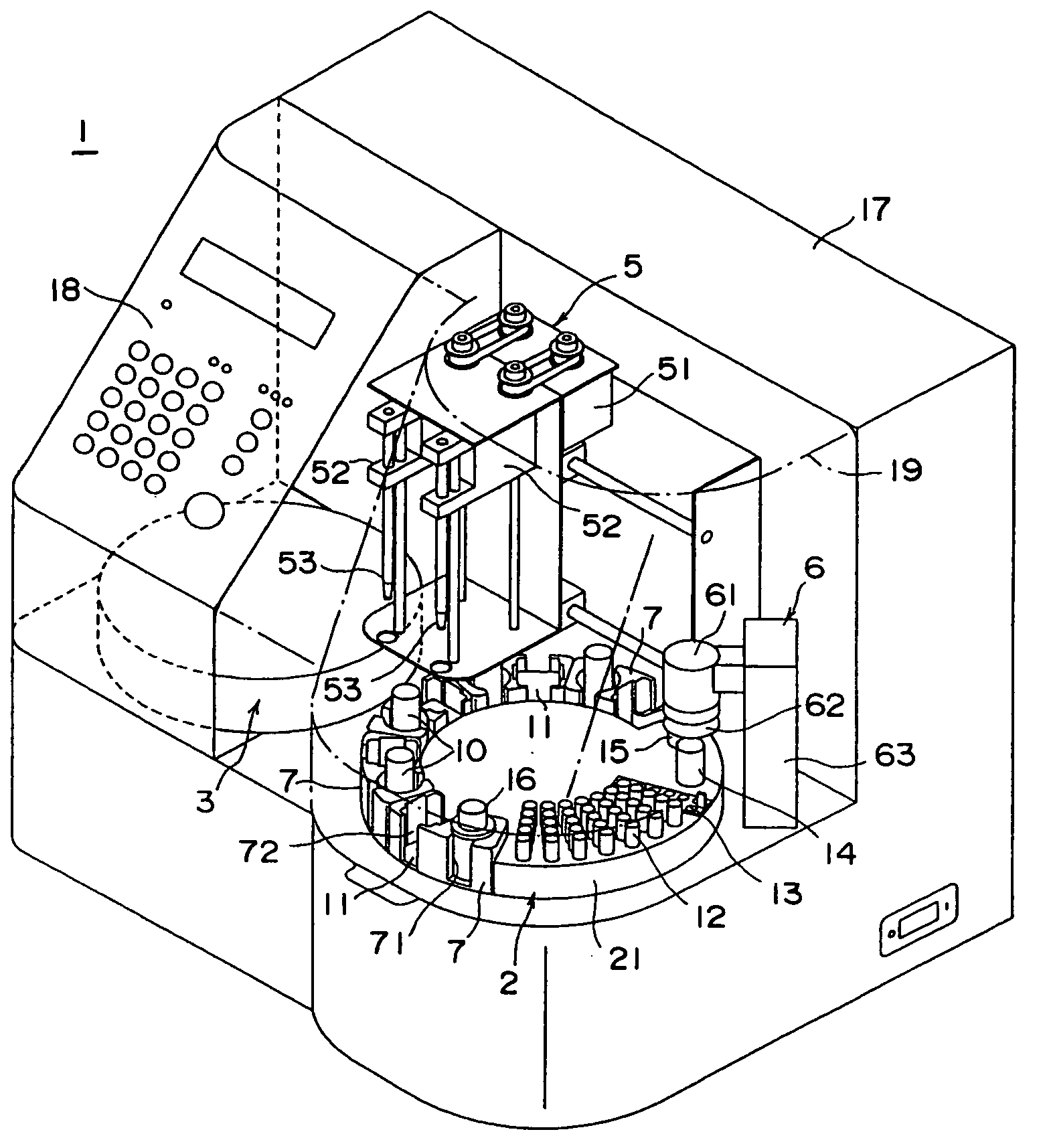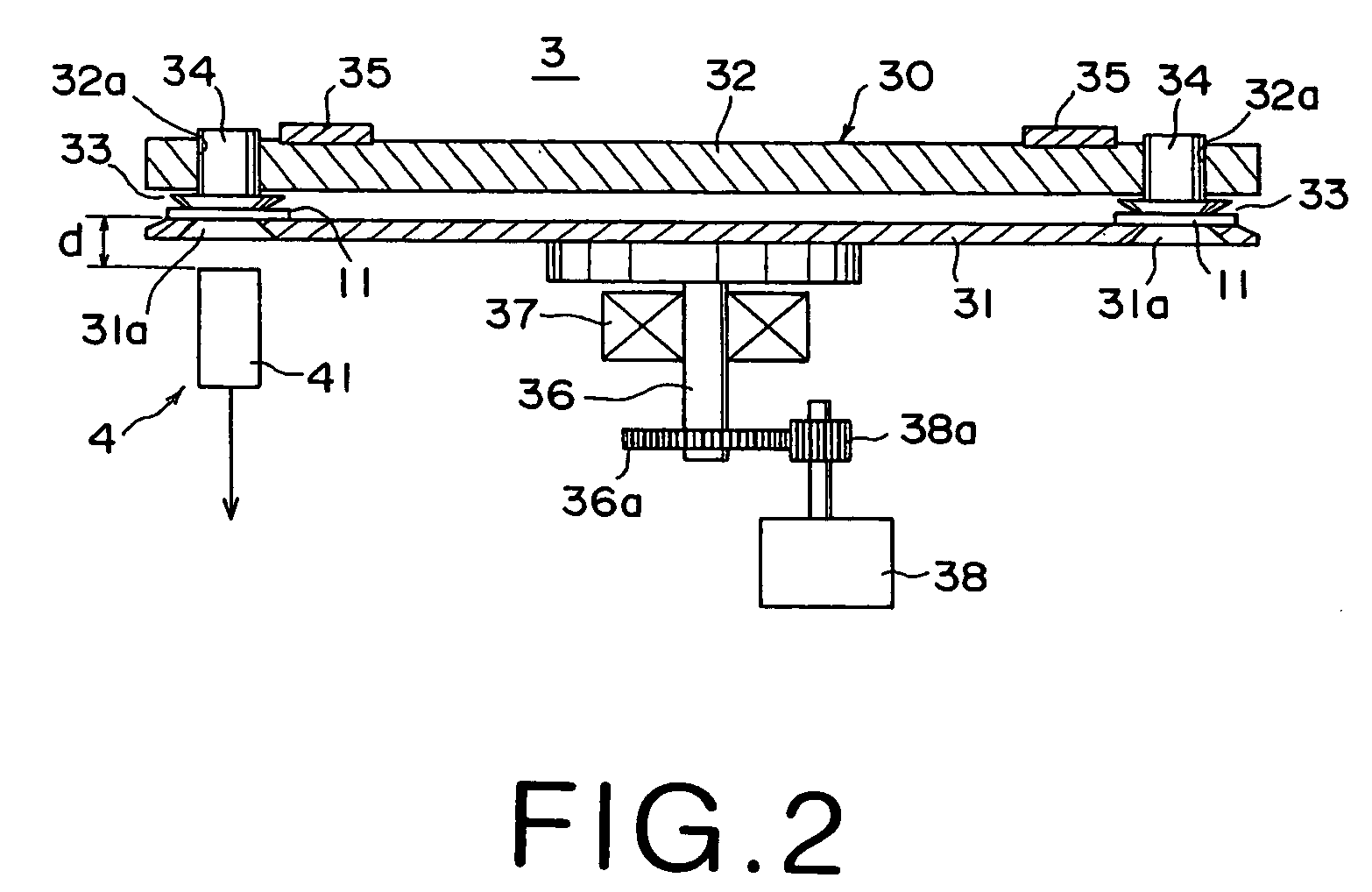Incubator
a technology of incubator and rotor, which is applied in the field of incubators, can solve the problems of increasing affecting the rigidity of the incubator rotor, and the inability to suppress the fluctuation of the distance, so as to and reduce the manufacturing cost of the incubator
- Summary
- Abstract
- Description
- Claims
- Application Information
AI Technical Summary
Benefits of technology
Problems solved by technology
Method used
Image
Examples
Embodiment Construction
[0035] In FIG. 1, a biochemical analysis system 1 comprises a system body 17 and a circular sample tray 2 is provided on one side of the front portion of the system body 17. A circular incubator 3 is provided on the other side of the front portion of the system body 17, and a spotting station (not shown) is provided between the sample tray 2 and the incubator 3. Further a spotting nozzle unit 5 is provided on an upper portion of the system body 17 to be movable right and left. A dry analysis element 11 held in a sample cartridge 7 is moved to the spotting station and spotted with a sample. Then the dry analysis element 11 spotted with the sample is transferred to the incubator 3. A blood filtering unit 6 for separating blood plasma from blood is provided beside the sample tray 2.
[0036] The incubator 3 comprises an incubator rotor 30 and a measuring means 4. The incubator rotor 30 comprises lower and upper disc members 31 and 32, and a plurality of element chambers 33 in which the d...
PUM
| Property | Measurement | Unit |
|---|---|---|
| angle | aaaaa | aaaaa |
| concentration | aaaaa | aaaaa |
| temperature | aaaaa | aaaaa |
Abstract
Description
Claims
Application Information
 Login to View More
Login to View More - R&D
- Intellectual Property
- Life Sciences
- Materials
- Tech Scout
- Unparalleled Data Quality
- Higher Quality Content
- 60% Fewer Hallucinations
Browse by: Latest US Patents, China's latest patents, Technical Efficacy Thesaurus, Application Domain, Technology Topic, Popular Technical Reports.
© 2025 PatSnap. All rights reserved.Legal|Privacy policy|Modern Slavery Act Transparency Statement|Sitemap|About US| Contact US: help@patsnap.com



